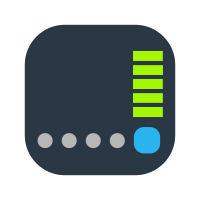I'm doing a Hyper backup to USB drive (dest: ext4, compressed, encrypted, no backup rotation, 8TB drive) for offsite, about 5 TB data. When I do the initial backup, it takes a long time (expected). When I do the second backup on that same job, it again takes a long time, and then runs out of space. I've tried both "Local Folder & USB" and "Local Folder & USB (single version)", with same results. My only alternative is to blow the job away and re-create it every time. Labour intensive.
This puzzles me. There is not much change to the data between the two backups, so I would expect a similar result to another backup we do ("Remote NAS device", compressed, not encrypted, no rotation) to another ext4 NAS connected to the same LAN (in another building); different data set, but a lot of data. Initial backup, long time, as expected. Second and subsequent, very little time or growth in destination file, presumably due to de-dupe, as advertised.
Is there a setting I'm missing? Is this by design? Is there a way to do this so that it will de-dupe (e.g., put the USB drive on the remote NAS, so that it will de-dupe?)
Obviously for offsite backup purposes, the drive needs to be dismounted and removed.
Thanks in advance.
This puzzles me. There is not much change to the data between the two backups, so I would expect a similar result to another backup we do ("Remote NAS device", compressed, not encrypted, no rotation) to another ext4 NAS connected to the same LAN (in another building); different data set, but a lot of data. Initial backup, long time, as expected. Second and subsequent, very little time or growth in destination file, presumably due to de-dupe, as advertised.
Is there a setting I'm missing? Is this by design? Is there a way to do this so that it will de-dupe (e.g., put the USB drive on the remote NAS, so that it will de-dupe?)
Obviously for offsite backup purposes, the drive needs to be dismounted and removed.
Thanks in advance.

